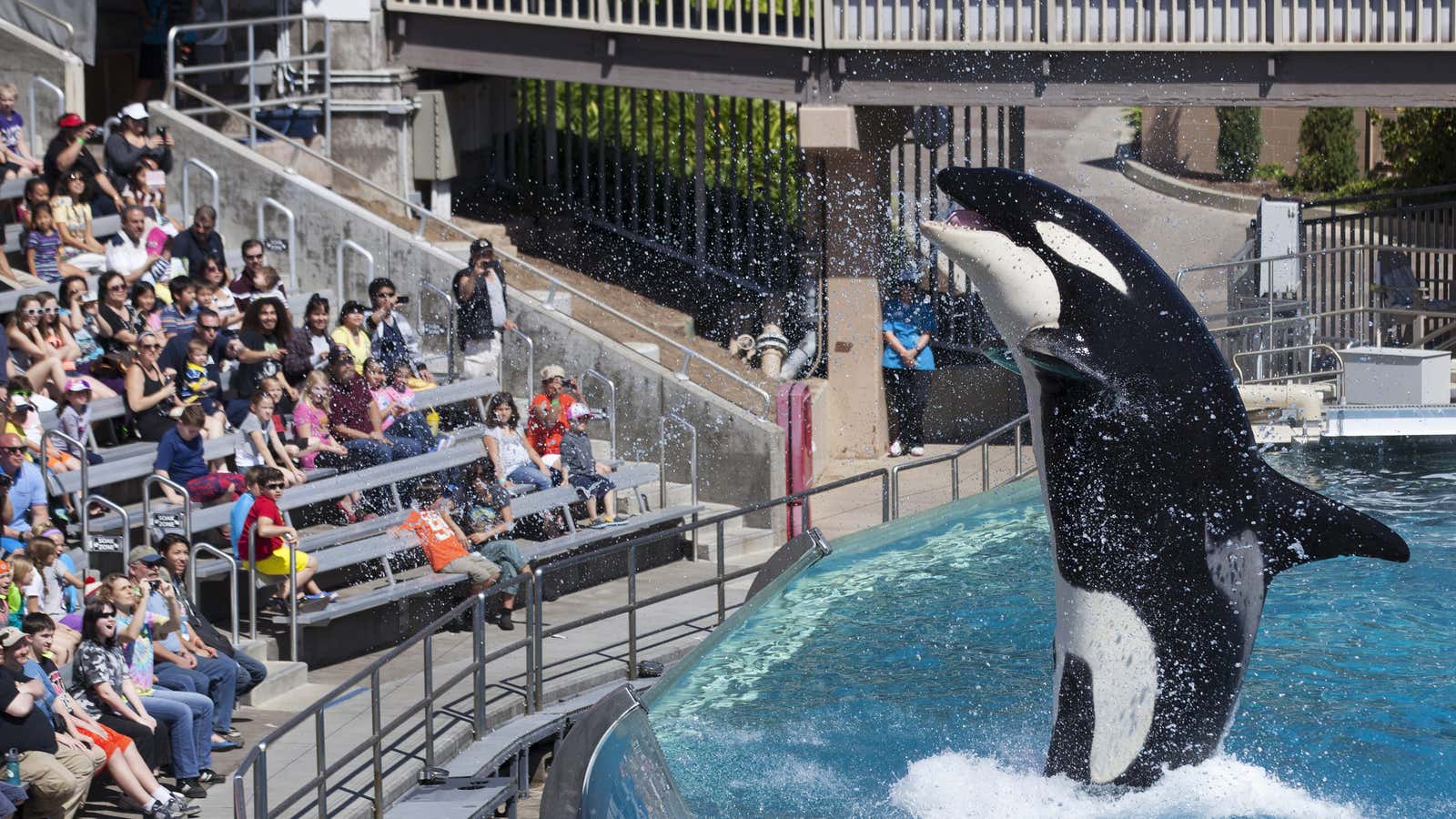If you want to see orcas jumping through hoops, or dolphins balancing balls on their beaks, you’ll have to google it all by yourself.
As of this week, tourists can no longer purchase tickets through the booking giant TripAdvisor to aquariums and parks anywhere in the world that “breed, import or capture whales, dolphins, porpoises and other cetaceans for public display.” In the US, that means SeaWorld’s three locations in Florida, Texas, and California, among other water-based attractions.
Unlike in many other countries, including India, Canada, Brazil, and the UK, it’s still entirely legal to keep dolphins and whales for entertainment purposes in the US—even though animal welfare experts widely agree that the practice is cruel.
There are a few reasons why it’s so difficult to impose a federal ban on keeping and using cetaceans in this way, says Kim Kelly, director of legislative affairs at the Animal Legal Defense Fund.
First of all, she says, “animals are still considered property under US laws and do not enjoy some of the legal protections other countries afford. As a result, expanding protections can be politically challenging.” Multiple Canadian provinces, for instance, have legislation in place that explicitly defines animals as “sentient beings with biological needs.” But in the US, while it is illegal to expose animals to “undue cruelty,” they have very few rights of their own. (It’s the reason why a healthy pet dog in Virginia was legally put down earlier this year, to honor its owner’s wish that they be buried together.)
“Wildlife parks such as SeaWorld have also made corporate pledges to phase out certain activities, but those pledges are legally unenforceable,” she says. After a huge backlash sparked by the 2013 documentary Blackfish, SeaWorld promised in 2016 that it would phase out using killer whales for entertainment by the end of 2019. The company seems to have forgotten this pledge, however: it is currently promoting a 2020 killer whale show.
Then there’s the question of money, says Kelly. “Some animal parks are well-funded, enabling them to direct resources to fight legislation that would provide additional protections for animals or otherwise place restrictions on the parks.” In the past five years, SeaWorld has spent around $3 million on federal lobbying. In the years immediately following Blackfish’s release, it was one of the largest donors from the recreational sector, with annual expenditure exceeded only by the National Football League.
In the past three years, TripAdvisor has removed hundreds of experiences from its books after repeated calls and petitions from animal welfare groups. But interest in animal tourism remains undimmed. Vacationers continue to seek out opportunities to pat tigers, ride elephants, or swim with dolphins, even as some global travel companies do their best to move away from the practices. In the first six months of 2018, SeaWorld reported a year-on-year increase of 900,000 more guests across its 12 parks. Shares are now at about $27, up from a low near $10 in November 2017.
But new forms of tourism are springing up to appeal to animal lovers with a sense of responsibility. Airbnb now offers around 300 different animal “interactions.” These have been drawn up according to World Animal Protection guidelines, so that tourists can “connect with a clear conscience.” That might mean observing gibbons in the wild in Thailand, meeting dolphins off the Miami coast, or, most unusually, watching the rock band KISS play to an audience of great white sharks in the Indian Ocean near Australia. (They “love the low-frequency sounds of rock and roll.”)
